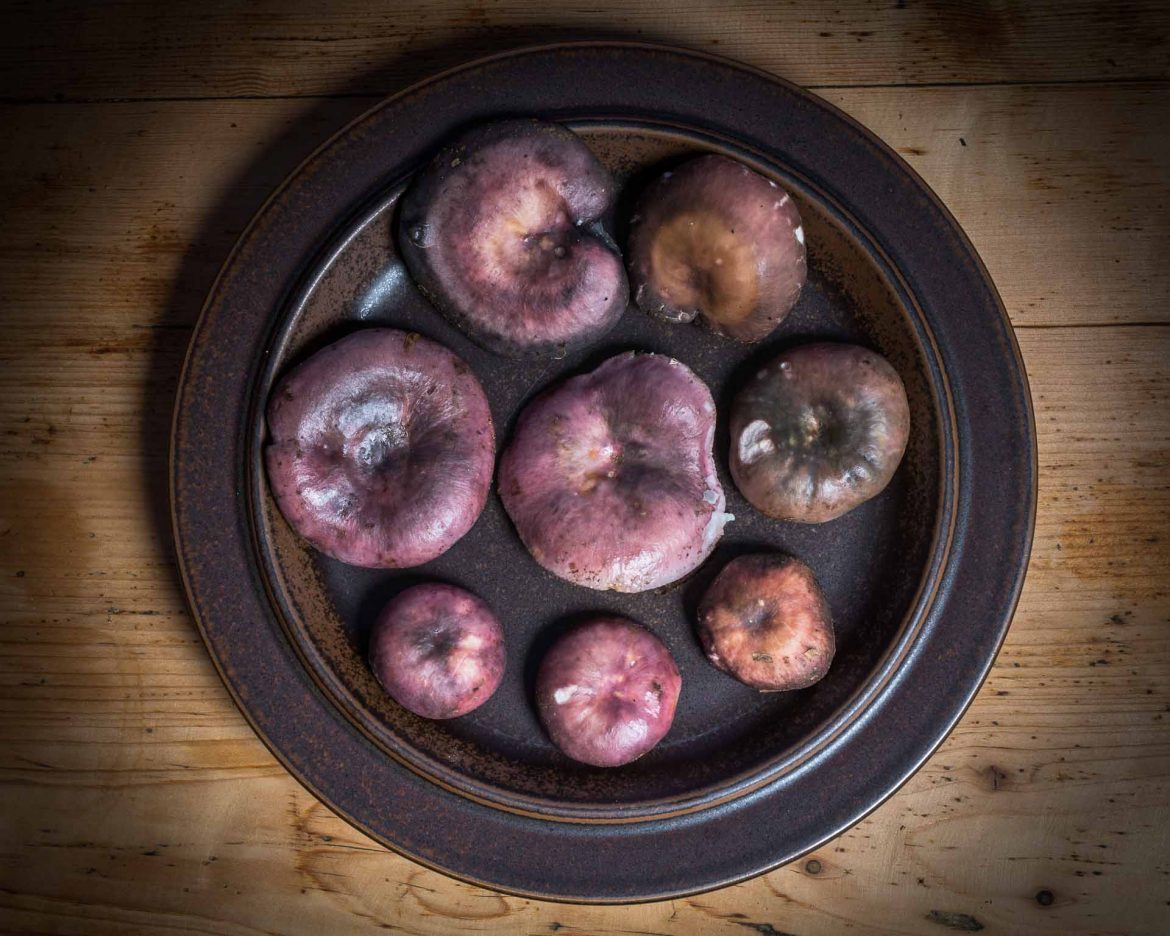swe.: Brokkremla | nor.: Broket kremle | fin.: Kyyhkyhapero | dt.: Frauentäubling
Charcoal burner is a great mushroom that we love especially when the caps are fried in a pan along with some parsley, salt and pepper. Despite its great taste this a highly underestimated mushroom like all brittle-gills. Since it is not offered commercially in markets and requires some knowledge to identify, people often overlook these wild forest gems.
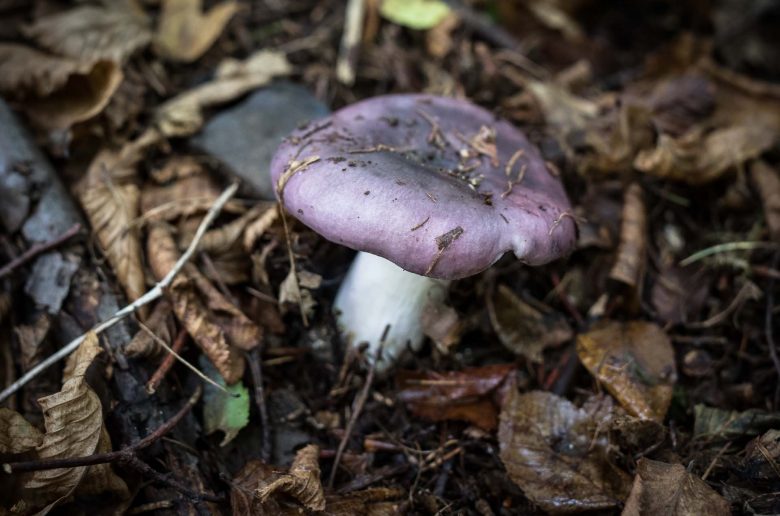
Only harvest mushrooms that you can identify with 100% certainty! The consequences can be life threatening if you are wrong. If you have the slightest doubt: do not eat the mushroom! This is not a mushroom guide! For correct identification consult a mushroom expert.
Appearance of the charcoal burner
The fleshy hat is hemispherical when young, then spread out flat and deepened almost funnel-shaped with age. It reaches a diameter of 6 to 15 cm. The upper side is often tinted slate gray in young specimens. Later, the color is made up of purple and green parts, of which one color can dominate up to a single color.
The gills are white and are usually relatively thin. Unlike most gills from the family Russula, they are quite soft and pliable. The large, sturdy stem is white, in rare cases with a purple or reddish touch. The flesh is white, but violet-purple under the cap skin. It is odorless and tastes mild.
diameter: up to 15 cm
months: June – October
colour: violet, green
habitat: oak, beech, spruce
characteristic: flexible gills
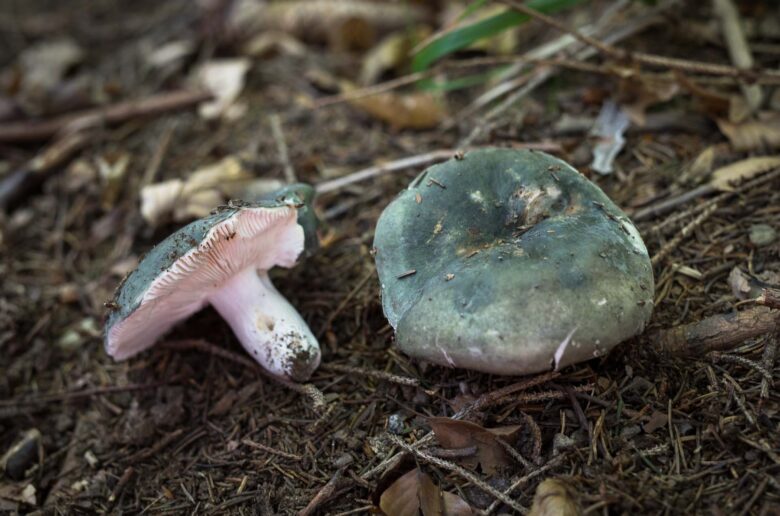
Confusing the charcoal burner with other Russulas
From similar species such as the Amethyst brittlegill (R. Amethystina) Russula ionochlora or Russula parazurea, charcoal burners are easiest to distinguish by the flexible, non-splintering gills. Other confusion may be with green-crackling russulas (Russula virescens) or the greasy green brittlegill (Russula heterophylla).
There are more than 700 different species in the Russula family and many of them can only be distinguished with a microscope or genetically. Telling them apart gives even the die hard mycologist a hard time. Nevertheless, a lot of them are edible and some like the charcoal burner or the green-cracking russula rank among the best edible mushrooms out there. Luckily (at least here in Europe) there is a rule to seperate the good from the bad.
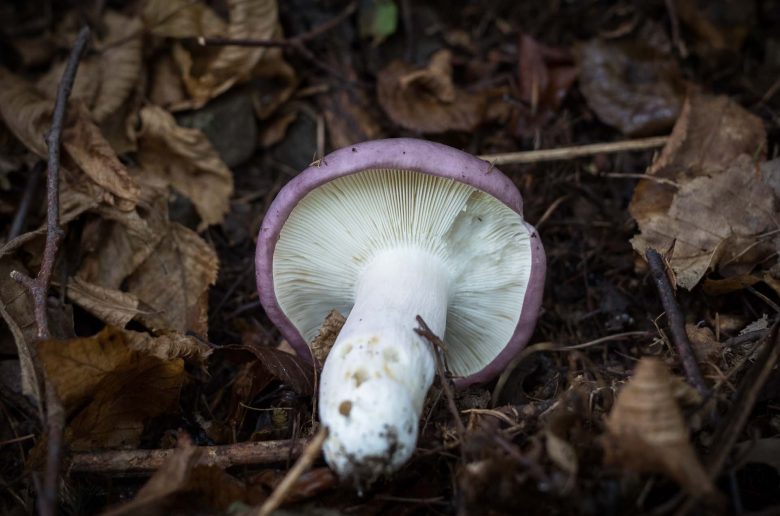
The Russula rule
Basically, as with all Russula spp. (at least in Europe) the “russula rule” is: “Any tasty russula can be eaten“. Of course, this presupposes that the genus Russula can be clearly identified without doubts. Inedible or poisonous species of the genus Russula are characterized by a spicy, pungent or bitter taste. A small taste-sample can therefore provide further information.
But be careful: Many highly poisonous mushrooms from other fungal families (e.g. death cap mushroom) can be just as mild and “tasty”, but cause severe poisoning even in very small quantities. Anyone who has even slight doubts should refrain from collecting or tasting mushrooms in general and especially with white gills!
Confusing the charcoal burner with the deadly death cap
Be very careful not to mistake this mushroom for the deadly poisonous death cap (Amanita phalloides)! This might sound trivial for many but these deadly mistakes occur every year. Check your mushroom guide for distincition features and only collect them if you are absolutely certain!
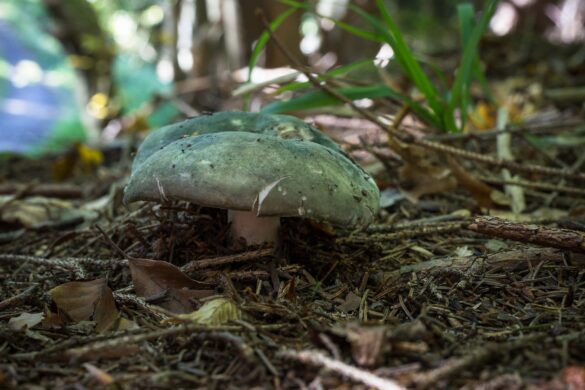
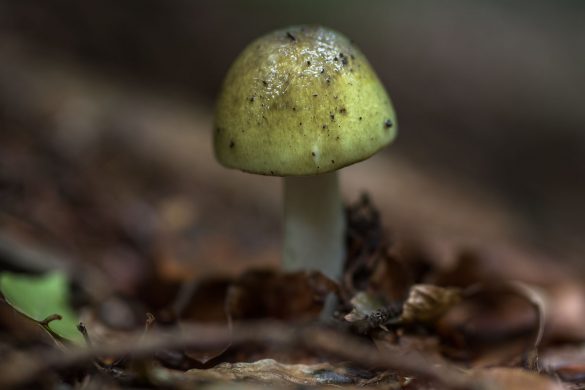
Habitat of the charcoal burner
Charcoal burner are mycorrhizal fungi that are associated with various deciduous and coniferous trees. It can mostly be found under beeches, but also with spruce and oak. It’s main season is from June till October.
Cleaning charcoal burners
The charcoal burner is widespread in Europe and is considered one of the best edible mushrooms here. However, the competition when it comes to picking them is fierce and, in addition to other mushroom enthusiasts, there are also many animals that like to feast on these delicacies. When harvesting, it is therefore advisable to pay particular attention to maggots and snails and, if necessary, to remove infested parts.
The surface of the cap is slightly sticky, especially in damp weather conditions, and tends to attract dirt. Thorough cleaning is therefore required before use. A damp cloth can help to remove most dirt from the cap. However, we usually remove the cap skin entirely respectively as far as it can be removed. We also remove the stem.
Charcoal burner in the kitchen
In the past, the traditional way of preparation for charcoal burners was to directly roast them on the hot surface of wooden ovens. Even if the methods have slightly changed nowadays, the purist approach of simple frying is still the best way to go in our oppinion.
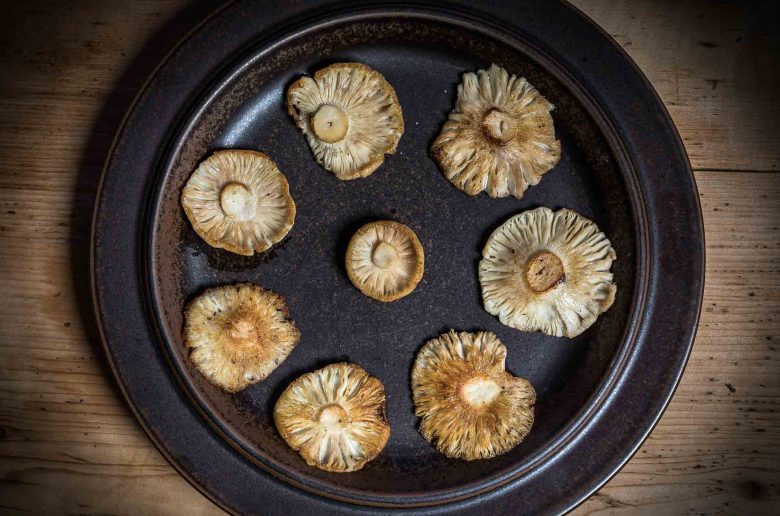
Its firm flesh has a slight hazelnut taste and keeps its texture also during cooking. Probably the easiest way to prepare it is fried in a pan with some salt. Served with some bread this can make a whole meal given that you have enough specimens at hand. It goes also very well in stews or along with fried meat. In Italian cuisine it is also very popular in sauces for various pasta dishes.
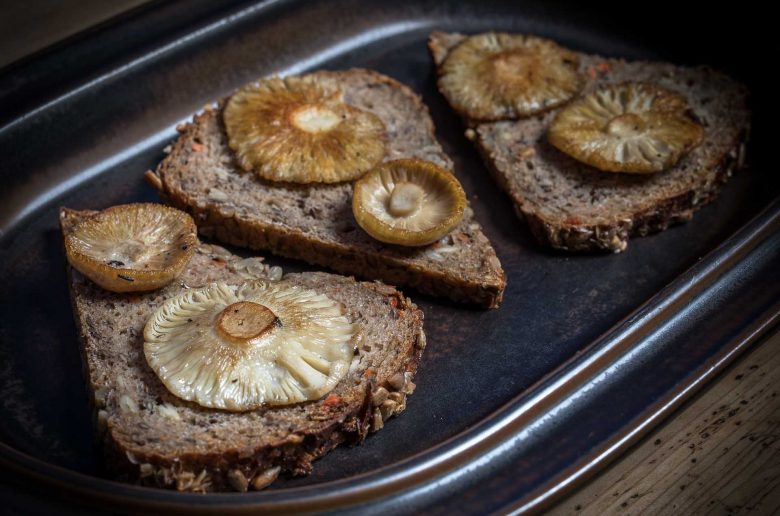
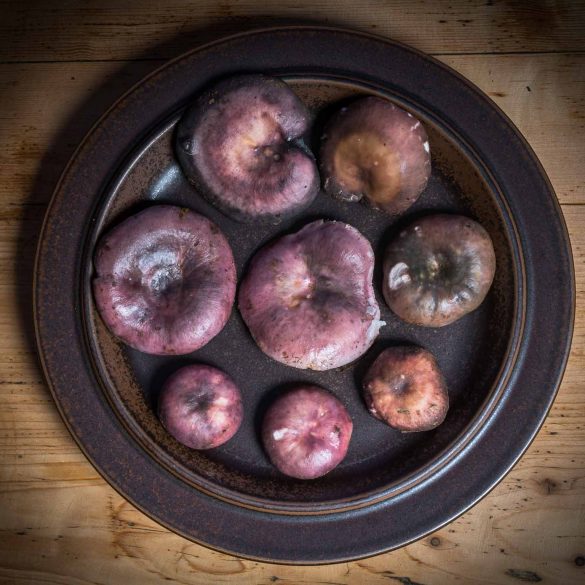
Fried charcoal burners (Russula cyanoxantha)
Ingredients
Charcoal burners – 10 medium sized caps
Olive Oil – 3 Tbsp.
Parsley – 2 Tbsp.
Black Bread – 4 slices
Salt – on demand
Pepper – on demand
Instructions
- Remove stems. You can use them in other dishes as stews but they are not very suitable for frying.
- Clean the caps with a brush. Avoid water. If the top of the cap is contaminated with earth simply peal of the skin. We usually peel of the skin anyway except for very young specimens.
- Heat oilve oil or butter in a pan. Put the charcoal burners with the underside in and stew in the closed pan for about 1 minute.
- Then turn the caps over, lightly salt and possibly. pepper a little. 3 to 4 minutes of frying is all it usually needs now.
- Fry until water forms in the cap so that the mushrooms stew in their own juice.
- Add fresh parsley (optional)
- Serve the mushrooms with (black) bread.
Find some inspiration in other mushroom recipes
↓↓↓
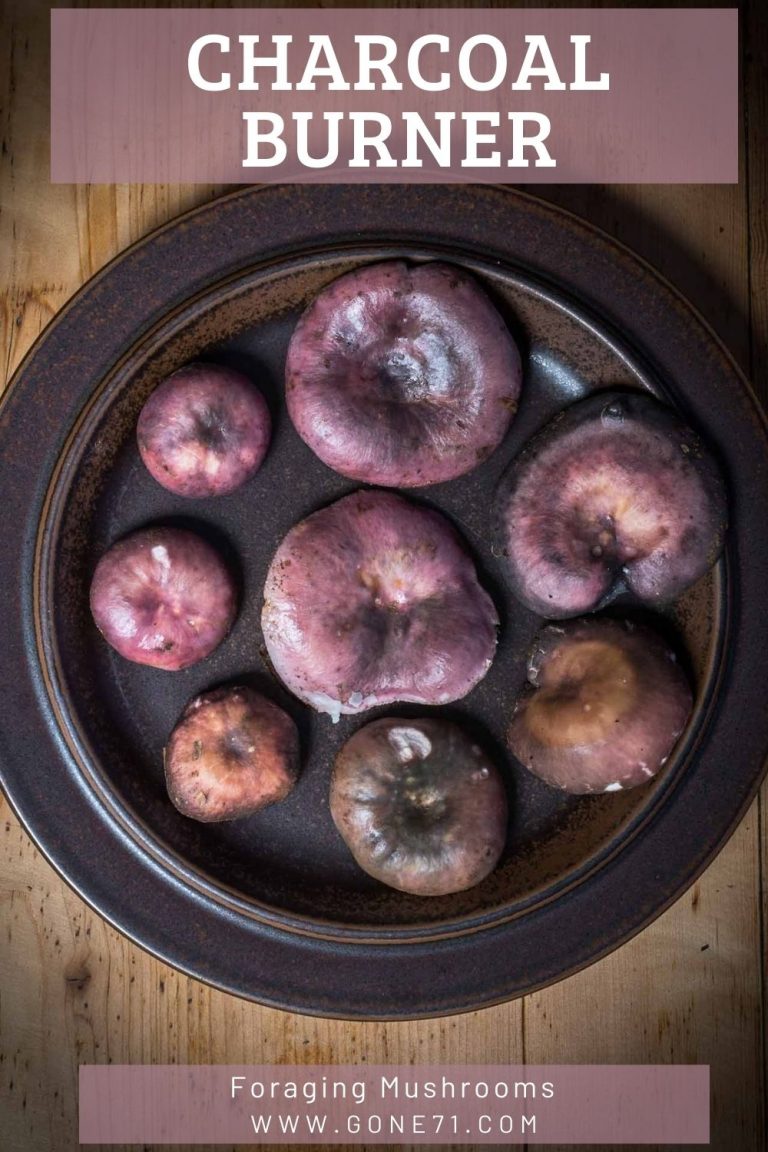
We have compiled this overview with the best of knowledge and belief, but do not claim to be complete and reserve the right to make errors.
Learn more about poisonous mushrooms and mushroom poisons here
↓↓↓

